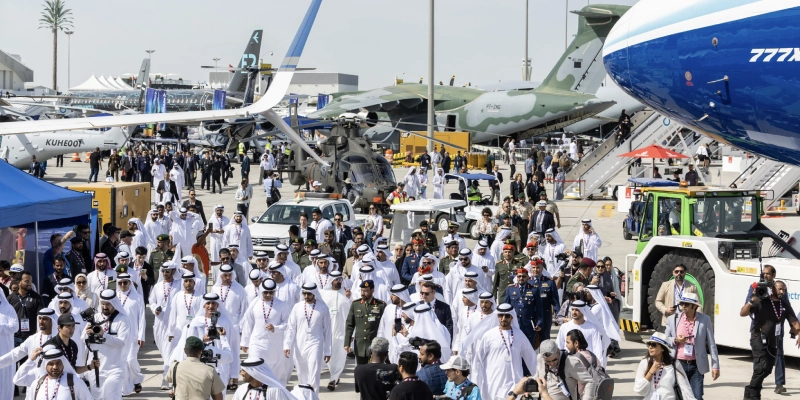From November 17th to 21st, the Dubai Airshow will bring together the main players in commercial and military aviation on a stage where new aircraft orders, production delays, and Chinese ambitions intertwine with the geopolitical context.
Although US President Donald Trump’s tour in May, with multi-billion dollar commitments for Boeing, anticipated some of the event’s typical announcements, this edition promises relevant novelties, especially for Airbus, which seeks to close the gap in the order race against its American rival.
Airbus Gains Momentum in the Region
Airbus arrives at the event with expectations of closing key deals in the Gulf. Flydubai, a traditional Boeing customer, is for the first time evaluating a European order that could be split between both manufacturers. Emirates, its sister airline, is also in negotiations to acquire at least 30 A350-1000 units, having postponed the order in 2023 due to disagreements over engine performance.
Abu Dhabi-based Etihad plans to incorporate more than a dozen Airbus wide-body aircraft.
Stuart Hatcher, chief economist at the consultancy IBA, estimates the airshow could generate around 300 orders, approximately half the levels reached in peak years.
Boeing Faces New Delays
In contrast, Boeing arrives at the event under the shadow of new delays in the development of the 777X, whose launch has now accumulated seven years of setbacks. Emirates, the model’s main customer, has opted to keep older aircraft in operation, a trend that also impacts the cargo market, where the conversion of used aircraft is decreasing in favor of models specifically designed for transport.
Rise of New Competitors
This year marks the international debut of COMAC’s C919, the Chinese manufacturer seeking to position itself as an alternative to the Boeing 737 and Airbus A320neo. Although its certification in the West could take years, China aims to expand its commercial ties with the Gulf and Africa, opening new opportunities for its aviation industry.
A New Air Map in the Gulf?
This edition coincides with the 40th anniversary of Emirates, the airline that transformed the Gulf into a nerve center for global connections. However, analysts like Richard Aboulafia warn that countries such as Turkey, India, and Saudi Arabia are betting on the same type of traffic, which could redistribute regional prominence.
Habib Fekih, former Airbus director for the Middle East, recalls that similar predictions have failed in the past: “When Emirates was born, it was said that Gulf Air would collapse; then that Qatar Airways would limit its growth, and then Etihad. The opposite happened.”
Air India, with orders nearing historical records, could capture some of the Gulf traffic, although this process will take time.
Defense: Growing Interest in Next-Generation Fighters
The airshow also serves as a showcase for the military industry. Following Trump’s visit, which reinforced defense ties with the region, there is renewed interest in Lockheed Martin’s F-35. Saudi Arabia has advanced its request to acquire 48 units, which could open the door for other Gulf countries like the United Arab Emirates and Qatar, which have shown interest in the past without finalizing deals.
Russia, for its part, will present its Su-57E stealth fighter in Dubai for the first time, while US startups like Anduril seek to expand in the region through partnerships, such as the one announced with Abu Dhabi’s EDGE for drone development.
This Dubai Airshow is shaping up to be a turning point for global aviation, where strategic decisions, technical challenges, and new alliances could redefine the balance of the sector in the coming years.
With information from Reuters
LATAM Airlines Presents Its New Brand Promise: “Welcome to Going Higher”
Avianca Expands Its Premium Flight Experience on Domestic Routes
Copa Airlines Extends Flight Suspension to Venezuela Until December 18
Satena Temporarily Suspends Flights to Venezuela
Related Topics
Plataforma Informativa de Aviación Comercial con 13 años de trayectoria.
